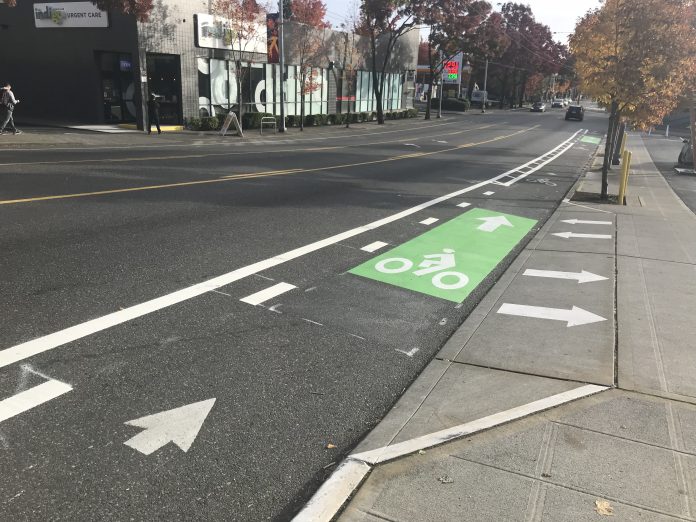
The Seattle City Council discussed budget amendments affecting the Seattle Department of Transportation (SDOT) on Friday and the outlook for undoing some of Mayor Jenny Durkan’s most damaging cuts is good. The Move All Seattle Sustainably (MASS) Coalition backed a package of four amendments and all have met the threshold to advance: garnering three sponsors.
In fact, two amendments–funding Rainier Avenue sidewalks and Route 44 upgrades–have six sponsors, indicating enough support to pass them. Based on discussion Friday, the Route 44 amendment will also include language about adding a protected bike lane and pedestrian improvements on the I-5 overpass.
SDOT had not included bike and pedestrian improvement at the I-5 overpass in its 30% designs. That said, NE 45th Street bike lanes have long been a priority of the bicycling community (identified in the Bike Master Plan) and was written into the 2015 Move Seattle Levy, which states: “Develop plans and complete improvements to enhance the NE 45th St corridor for pedestrians and cyclists between 4th Ave NE and Brooklyn Ave NE by the time University Light Rail opens in 2021.”
Designing a 45th Street Bike Lane
Local chapters of Seattle Neighborhood Greenways and the Wallingford Community Council pushed SDOT to put the improvements back into the Route 44 plan, pointing to the Move Seattle promise. They succeeded in getting the idea studied after Councilmember Alex Pedersen elevated their request and asked SDOT to study it back in March. SDOT’s final report (see designs here) deemed the westbound protected bike lane feasible, but the eastbound bike lane infeasible (without taking a lane). Given the result, advocates were under the impression that the westbound bike lane would be included, but it appears budget reductions caused the Route 44 team to cut it.
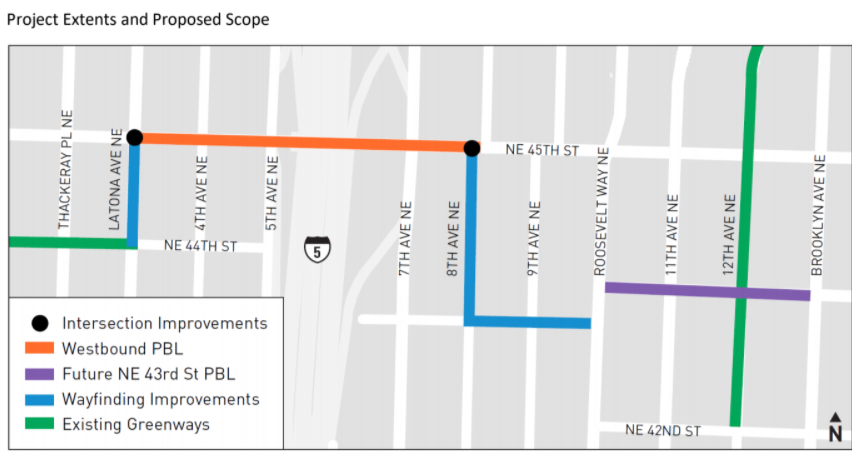
This would be a huge missed opportunity, jeopardizing safety on the overpass. “There have been 25 injury collisions involving pedestrians or cyclists on NE 45th between Thackeray and 8th Ave NE in the last decade,” their proposal notes, citing a Seattle Times report showing NE 45 Street’s intersection with 1st Avenue NE and Roosevelt Way NE among the top ten most dangerous in the city.
It’s not yet clear if the $1 million in the Route 44 amendment sponsored by Councilmember Dan Strauss could both prevent cuts to the Route 44 plan and add the NE 45th Street Bridge protected bike lane and jersey barrier. SDOT declined to provide specific cuts when asked what the $1 million cut entailed, but did indicate “additional investments in access or safety improvements” is where they skimped. It’s possible the 30% designs (released in June) already reacted to the smaller budget expected and the extra million in the amendment could make it all happen. If not, the amendment should increased in size. SDOT estimated the bridge improvements at $500,000 to $1,000,000.
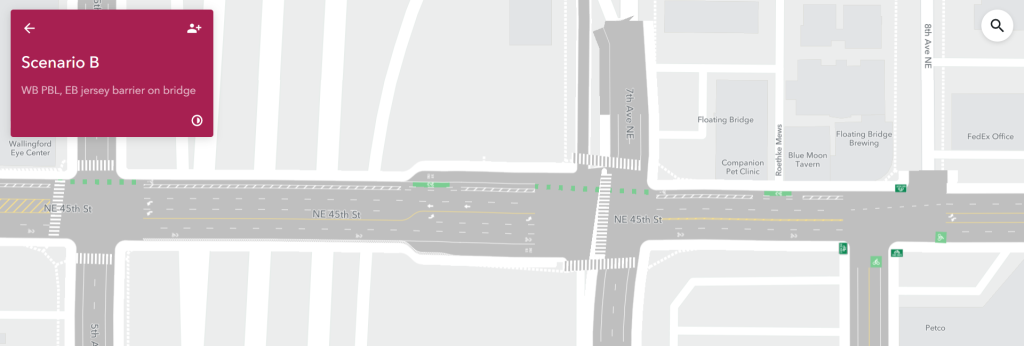
Wallingford Greenways advocate Eric Fisk (who is also a former president of the Wallingford Community Council) even did SDOT the favor of mocking up a design. The design adds a protected bike lane on the north side of the bridge for the climb up the hill from Latona Avenue NE to 8th Avenue NE. At Latona, people biking would be directed to the existing NE 44th Street greenway in Wallingford. Similarly, on the University District side, people biking would be directed to the south on 8th Avenue NE to the NE 43th Street greenway and onto to U District Station, which will open next year.
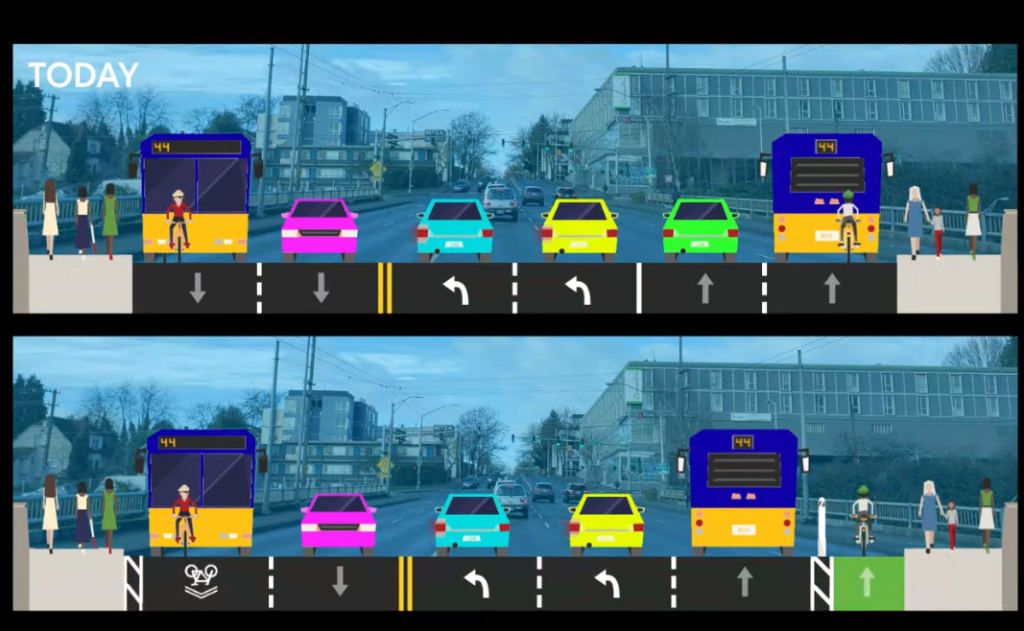
SDOT’s study on the bridge clears the way for a significant safety upgrade–with the caveat that SDOT says that the Washington State Department of Transportation (WSDOT) would have to sign off on the design since it impacts their on-ramps and has not returned their inquiries yet. Fisk stressed the plan does not require taking parking spots and has the support of local businesses–factors that often prove stumbling blocks and recently doomed the NE 35th Avenue safety project.
“We’re very glad the jersey barrier can be added to the south side of the bridge,” Fisk said. “This is a big bonus for pedestrians accessing light rail! We understand this may impact the length of turn lanes so that freight can still go through, but to be clear we want the jersey barrier in place.”
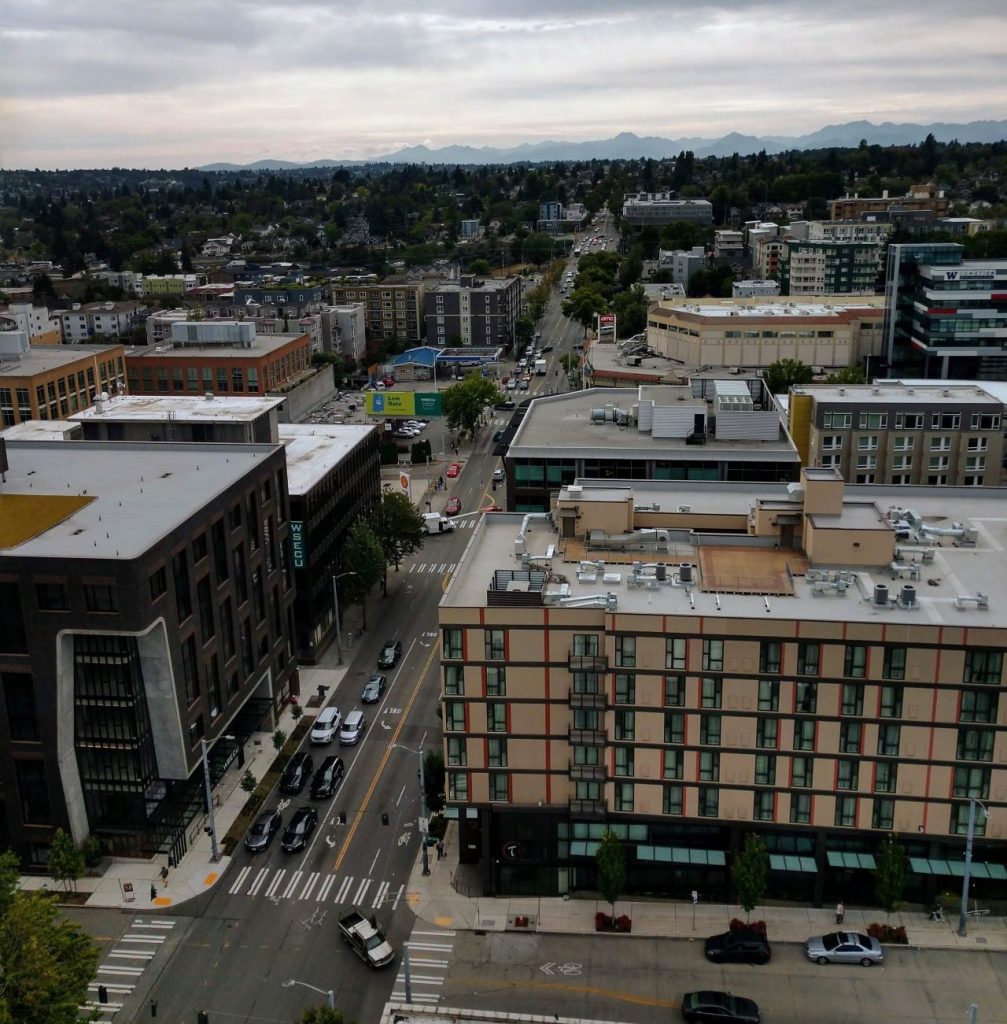
Vicky Clarke, Policy Director at Cascade Bicycle Club, welcomed the improvements.
“Right now, biking from Wallingford to the U District for school, work, or play requires a long detour or a ‘white knuckle ride’ in multiple lanes of traffic on the 45th Street bridge,” Clarke said. “Next year, when the U District light rail station opens, we anticipate more people needing and wanting to make that trip by bike. That’s why bridging the 45th Street divide between Wallingford and the University District with bike safety improvements is a timely funding need. Anything we can do to make biking and walking between the Wallingford and U District neighborhoods more safe and comfortable–especially to access high capacity transit–is a win for all transportation users.”
Alternatives for Crossing I-5
The Seattle Bike Master Plan notes another solution for the gap in the bike network between Wallingford and the University District: a new bike and pedestrian bridge at N 47th Street. Alas, there’s no funding for building this bridge and it doesn’t look to be appearing on the scene anytime soon. A presentation Wallingford Community Council and the Greenways groups put together notes that even if the N 47th Street bike bridge did materialize eventually, the N 45th Street bike lanes would still be a valuable asset.
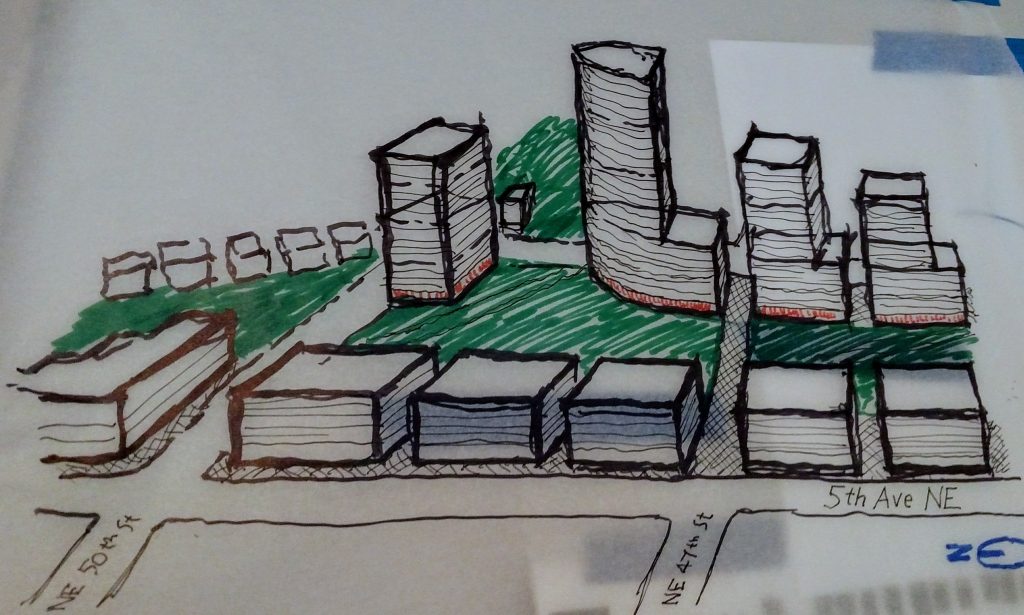
Another way to improve bike and pedestrian access would be a University District lid, repairing the gash I-5 torn between the neighborhoods. Lid I-5 did a charrette study on in 2017, which I participated in and wrote up. Under such a plan the freeway could be capped from N 52th Street to N 43rd Street, give or take, with parks and housing on top–plus more bike and pedestrian routes. It’s an intriguing idea, but also unfunded and a long way from realization.
For now, finding an extra $500,000 should be enough to provide a much safer bridge connecting the University District and Wallingford as was promised in the Move Seattle Levy. It’s amazing that advocates have to grovel for such basic safety improvements, but here we are.
Here is SDOT’s NE 45th Street bridge study if you’re curious:
Doug Trumm is publisher of The Urbanist. An Urbanist writer since 2015, he dreams of pedestrian streets, bus lanes, and a mass-timber building spree to end our housing crisis. He graduated from the Evans School of Public Policy and Governance at the University of Washington in 2019. He lives in Seattle's Fremont neighborhood and loves to explore the city by foot and by bike.


